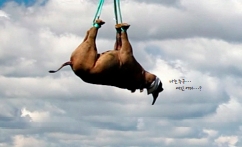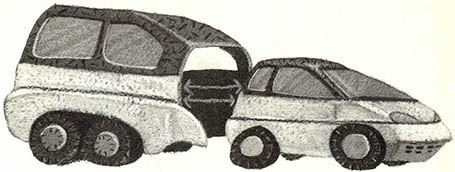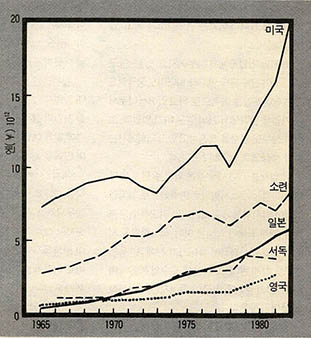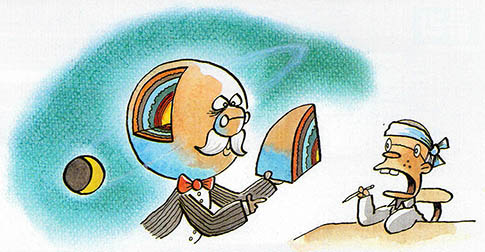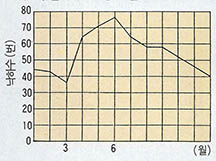지난 1920년 체코슬로바키아의 희곡작가인 칼 차펙이 만든 '로섬의 만능로봇(R.U.R.)'이라는 연극은 역사를 만들었다. 그때 이후 '노예'라는 뜻을 가진 체코슬로바키아 단어인 '로봇'은 인간이 해야할 일을 대신 수행할 수 있도록 제작된 기계를 설명하는 단어가 되었기 때문이다. 소설속에서 로봇은 흔히 인조인간처럼 보이지만 그 이름은 자동공장에서 도구를 움직이는 로봇형 팔처럼 인체의 부분적 활동을 대신하는 기계들을 일컫는 단어이기도 하다.
대부분의 소설 심지어는 대부분의 과학적 예측은 로봇공학의 미래를 다루는데, 필자의 남편 아이작이 로봇공학이라는 용어를 처음 사용했을때는 그 자신조차도 새로운 말을 만들어냈다고는 생각지 못했다. 그러나 아이작은 로봇공학과 인공지능연구자들에게 많은 영향을 끼친 '나는 로봇'이야기들을 집필함으로써 현대 로봇공학의 발전에 크나큰 기여를 한 셈이다. 필자는 이제 세상을 떠난 아이작이 실용로봇공학의 기술현황을 대신 소개해 주기를 바란다고 생각해 이 글을 쓴다.
우리말로 정말 실용적이려면 로봇은 이 세상에 사는 사람들을 도와줄 수 있어야 한다. 우리에겐 이미 우주공간을 떠돌면서 사진을 찍고 달이나 화성의 흙을 채취하는 로봇이 있다. 또 다른 로봇은 바다속 깊이 들어가 지구표면의 균열로부터 발생하는 유황을 먹고사는 박테리아를 주식으로 삼는 희한한 생물들을 연구하기도 한다.
우리 스스로는 이런 일을 할수가 없다. 그러나 로봇이 인간이 갈수 없는 영역을 탐험하든지 아니면 우리의 일상생활을 도와주는 것 뿐이든지 간에 만약 로봇이 우리가 보는 것처럼 볼 수 있고 우리가 물건을 다루듯이 다룰 수 있다면 보다 쉬운 이해가 가능하다. 로봇이 이런 일들을 우리보다 더 잘할 수 있다면 더욱 좋은 것이다.
'더 잘한다'는 말이 중요하다. 지난번 이라크와의 전쟁때 사막의 태풍작전에서 야간 보초 로봇은 인간의 눈으로는 볼 수 없는 어두움속에서도 마치 밤시력을 갑자기 되찾은 것처럼 군인들에게 사물을 식별할 수 있도록 해 주었다. 현재 카네기멜론대학의 로봇공학센터에서는 우주 탐사선 밖으로 나가 탐사선의 외부를 살펴본 후 보수정비를 수행할수 있는 로봇을 제작중이다. 또한 서호주 대학교에서는 가사노동에 더 밀접한 것으로 양털깎는 로봇개발 프로젝트가 진행되고 있다. 로봇이 한마리의 양털을 깎는데 소요하는 시간은 17분인데 이는 양모산업은 물론 양들에게도 좋다는 것이다.
마이클 알리는 자동화와 로봇공학을 연구하는 뉴욕주립고등기술원(교가를 부를 때를 생각해보라)의 대학원생이다. 그는 로봇의 팔을 만들었는데 우리의 손과 모습이나 활동면에서 꼭 닳아 사용법을 배우기가 아주 쉽다. 약간 떨어진 곳에서 조종되는 이 로봇손은 인간의 손처럼 흉내내며 움직이지만 중요한 점은 인간이 안전할수 없는 장소에서 활동한다는 점이다. 어쩌면 언젠가 알리씨의 로봇손은 인조인간의 한 부분이 될는지 모른다. 필자가 또다시 미래를 꿈꾸고 있는 것이긴 해도 말이다.
다시 오늘로 돌아오면, 실용성이 높은 보수 · 수선용 로봇들이 제작되고 있다. 노스웨스턴대학의 로봇공학자들에겐 자동차문화를 즐기는 미국인들에게 고통을 주는 구덩이를 재빨리 보수하는 로봇이 있다. 데이비스의 캘리포니아 주립대학엔 고속도로의 깨진 부분들을 발견하고 보수까지 해주는 로봇이 있다.
로봇의 시각능력도 향상되고 있다. 전자적 시각 시스템의 사용도는 비디오 카메라의 영상이 컴퓨터에 의해 디지털화되고 분석되어야 하는 까닭에 현재는 그 이용도가 미미한 형편이다. 우리는 우리의 눈과 두뇌가 어떻게 물체를 식별하는 지는 모르지만 우리인체는 그 일에 매우 빠를 뿐더러 최소의 단서들만으로도 놀랄만한 정확성을 발휘한다. 어떤 사람 머리의 조그마한 한부분만 보고서도 누구인지를 알 수 있는 것이 우리 인간인 것이다. 인간의 '구조적 시각력'을 평가하는 시험도 있다. 이 시험은 몇개의 조각을 맞추는 퍼즐의 그림을 제시한다. 그리고 주위에 비슷하지만 또 다른 퍼즐의 조각들을 분리시켜 위치를 바꾸어 놓는다. 이 시험의 주된 아이디어는 이렇게 놓여있는 조각들중에서 원래의 퍼즐 그림에 맞는 조각들만 골라내는 것이다. 화가와 엔지니어 그리고 많은 의사들까지도 이 시험에서 높은 점수를 얻는다. 그러나 기계들은 그렇지 못하다.
멀지않아 로봇기계들은 전자식이 아닌 광학적 시각시스템을 갖추게 될것이다. 광학장치들은 실험물체나 이 실험물체의 비교대상이 되는 물체의 형상을 받아들이고자 레이저광선을 이용하는데 그 과정이 복잡하다. 이러한 '접속변환 상관기'는 변하는 물체들을 매우 빠른 속도로 선별할수 있다. 개발자들이 이 접속변환상관기로 하여금 구조적 시각시험을 통과할 수 있도록 만들 수만 있다면 좋겠지만 아직은 물체들의 크기가 다르거나 다른 시선으로 물체를 볼 경우 제대로 일을 수행하지 못한다.
조셉 앵글버거의 변환연구 주식회사는 로봇들이 일반인들에게 유용하도록 하는 전문분야에 종사하고 있다. 이 회사는 로봇의 시각을 향상시키는 데도 분주하지만 '로그양극' 전자광학 영상처리 방법을 이용한 '핼프메이트'라는 배달꾼로봇은 병원의 복도와 엘리베이터와 공급품실과 주방을 바퀴다리로 굴러다니면서 식사와 약과 소독된 공급품을 밤낮을 가리지 않고 배달한다. 간호사들이 병원 약국으로부터 약을 가져오기 위해 환자곁을 떠날 필요가 없는 것은 바로 핼프메이트가 약을 골라내 배달해주기 때문이다. 헬프메이트는 자신이 가야할 길을 배우고 사람을 포함하여, 가는 길에서 만나는 장애물을 피할 수 있다. 가는 길이 어떤 장애물에 의해 가로막혀 있으면 이 로봇은 그 사실을 말로 이야기하며 비켜주도록 부탁하기도 한다.
언젠가 사람들이 이 헬프메이트에게 요리하는 법을 가르친다면 필자도 하나 사볼까 싶다.
In 1920, history was made by a play called "R. U. R." (Rossum's Universal Robots), by Czech playwright Karel Capek. Since then the Czech word "robot," meaning "serf," has been used to describe a manufactured device able to do the work of human beings. In fiction, a robot usually looks humanoid, but the name has come to apply to many devices that perform the actions of some human parts, like an automated factory's robotized arms for manipulating tools.
Most fiction, and even most scientific speculation, deals with the future of robotics, a term Isaac first used without realizing that he was coining something new. But Isaac also contributed heavily to the present development of robotics by writing his "I, Robot" stories, which influenced the career choice of many leading pioneers in robotics and artificial intelligence. I think Isaac would have liked me to bring readers up to date on some of the current developments in practical robotics.
To be genuinely practical, in our terms, a robot should be able to help us in our world. We already have robot devices capable of moving around in outer space, taking pictures for us, digging up pieces of the moon or Mars. Other robots go down into ocean depths to examine strange creatures living on bacteria that eat the sulfur coming out of cracks in the Earth's crust.
We can't do any of these things ourselves. But whether a robot is venturing into realms denied to humans, or merely helping us out in daily life, it's easier for us if the robot can see the way we see, and manipulate objects the way we do. Preferably a robot should do these things better.
"Better" is the important word. In Operation Desert Storm, robots on night surveillance showed soldiers things the human eye can't see in the dark-but the images were understandable, as if the human had suddenly acquired marvelous night vision. Right now Carnegie Mellon's Field Robotics Center is building a robot that can go out onto the space shuttles, inspect the tiles and perform maintenance. Closer to home is the woolshearing robot project at the University of Western Australia. Sheep can now be sheered in 17minutes, which is presumably better for the sheep as well as the wool industry.
Michael Ali is a graduate student at New York State Center for Advanced Technology in Automation and Robotics (try that in a school song). He's devised a robotic hand so similar in shape and activity to ours that it's easy to learn to use. Operated at a distance, the robot hand mimics what human hands can do, but in places where humans can't go safely. Perhaps someday Ali's robotic hand will be part of humanoid robots-but there I go, dreaming about the future.
Back in the present, useful repair robots are being devised. Roboticists at Northwestern University have one that quickly repairs potholes, the bane of car-happy Americans. At the University of California at Davis a repair robot can both recognize and repair highway cracks.
Improvements in robot vision are under way. Electronic vision systems now in use are slow, for the video camera's image must be digitized and analyzed by computer. We don't know exactly how the human eye and brain recognize objects, but we humans are certainly fast at it, often remarkably accurate with a minimum of clues. You need only see a small part of someone's head to be able to recognize who it is. There's a test for human "structural visualization" that consists of presenting a drawing that resembles a put-together jigsaw puzzle with only a few pieces.
Surrounding it are similar puzzles with the pieces turned around, and separate. The idea is to pick the drawing of scattered pieces that exactly represents the original puttogether puzzle. Artists and structural engineers, and even many doctors, are good at this. Machines are not.
Soon robotic devices may be equipped with an optical, not an electronic visual system. The optics are complex, using laser beams to carry images of the test object and the object with which the test object is to be compared. This "joint transform correlator" can pick out changing objects with great speed. If the developers can only make the thing pass the structural visualization test-but so far, it doesn't work well when the objects are different sizes or viewed at different angles.
Joseph F. Engelberger's Transition Research Corporation specializes in robots useful to ordinary human beings. While they are also busy improving robot vision, using "log-polar" electro-optical imaging, their HelpMate delivery robot trundles along hospital corridors, into elevators, supply rooms, and kitchens delivering meals, medicine, and sterile supplies, day or night. Nurses don't have to leave patients to get medicine from the hospital pharmacy, for HelpMate will pick it up and deliver it. HelpMate learns its route and avoids obstacles in its way, including people. When its way is blocked it announces this and asks to have the obstacle removed.
When they teach HelpMate to cook, I'm buying one.
(c) 1992, Los Angeles Times Syndicate
이 기사의 내용이 궁금하신가요?
기사 전문을 보시려면500(500원)이 필요합니다.
1992년 07월 과학동아 정보
🎓️ 진로 추천
- 컴퓨터공학
- 정보·통신공학
- 메카트로닉스공학







